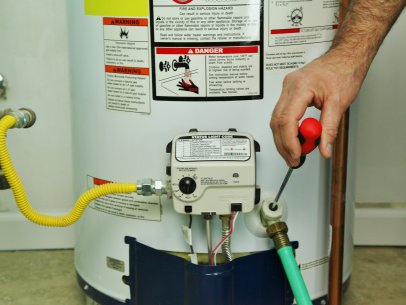Are you interested in answers concerning How to Maintain Your Water Heater & Prolong its Life?

Warm water is vital for daily comfort, whether it's for a revitalizing shower or cleaning meals. To ensure your warm water system runs effectively and lasts longer, regular upkeep is vital. This post offers practical tips and understandings on exactly how to maintain your home's warm water system to prevent disturbances and expensive repair work.
Intro
Preserving your home's hot water system could seem challenging, yet with a few simple actions, you can ensure it operates efficiently for years to find. This guide covers everything from recognizing your hot water system to DIY upkeep pointers and recognizing when to call in specialist help.
Relevance of Preserving Your Warm Water System
Routine upkeep not only expands the life expectancy of your warm water system but additionally ensures it runs effectively. Ignoring maintenance can bring about decreased performance, higher energy costs, and even premature failing of the system.
Signs Your Warm Water System Needs Upkeep
Knowing when your hot water system needs focus can avoid significant concerns. Watch out for indicators such as inconsistent water temperature, odd sounds from the heater, or rustic water.
Recognizing Your Hot Water System
Before diving right into maintenance jobs, it's helpful to comprehend the standard components of your hot water system. Normally, this consists of the hot water heater itself, pipes, anode rods, and temperature level controls.
Month-to-month Maintenance Tasks
Regular regular monthly checks can assist capture small issues before they intensify.
Purging the Hot Water Heater
Purging your water heater eliminates debris build-up, boosting efficiency and prolonging its life.
Checking and Replacing Anode Rods
Anode rods avoid rust inside the container. Evaluating and replacing them when worn out is essential.
Examining and Changing Temperature Level Settings
Readjusting the temperature settings ensures ideal performance and safety.
DIY Tips for Upkeep
You can carry out numerous maintenance tasks on your own to maintain your hot water system in top problem.
Looking for Leakages
On a regular basis evaluate pipelines and links for leaks, as these can cause water damage and greater costs.
Examining Stress Alleviation Valves
Evaluating the pressure relief valve guarantees it operates appropriately and stops extreme stress buildup.
Protecting Pipelines
Shielding warm water pipelines minimizes warmth loss and can conserve energy.
When to Call a Professional
While DIY upkeep is beneficial, some problems require professional know-how.
Facility Issues Needing Expert Aid
Instances consist of significant leaks, electric problems, or if your hot water heater is regularly underperforming.
Regular Expert Maintenance Benefits
Specialist upkeep can consist of extensive evaluations, tune-ups, and making certain compliance with safety and security standards.
Verdict
Routine maintenance of your home's warm water system is vital for performance, long life, and price savings. By following these suggestions and understanding when to seek professional help, you can make sure a trustworthy supply of warm water without unanticipated disturbances.
How to Maintain an Instant Hot Water Heater
Before tinkering with your hot water heater, make sure that it’s not powered on. You also have to turn off the main circuit breaker and shut off the main gas line to prevent accidents. Also turn off the water valves connected to your unit to prevent water from flowing into and out of the appliance. 2. When you’re done, you have to detach the purge valves’ caps. These look like the letter “T†and are situated on either side of the water valves. Doing so will release any pressure that has accumulated inside the valves while at the same time avoid hot water from shooting out and burning your skin. 3. When the purge valves’ caps are removed, you have to connect your hosing lines to the valves. Your unit should have come with three hoses but if it didn’t, you can purchase these things from any hardware or home repair shops. You can also get them from retail stores that sell water heating systems. Read the user’s manual and follow it to complete this task properly. When the hosing lines are connected, open the purge port’s valves. 4. You should never use harsh chemical cleaners or solutions when cleaning your unit. Make use of white vinegar instead. It should be undiluted and you’ll probably use about 2 gallons. 5. Now flush your water heater. This task should probably take about 40 minutes. We can’t give you specific directions for this because the procedure is carried out depending on the type, model and brand of your heater. With that being said, refer to the user’s manual. 6. When you’re done draining the unit, you have to turn off the purge port valves again. Remove the hosing lines that you earlier installed on each of the water valves. Put the valve caps (purge port) back in their respective places and be very careful so as not to damage the rubber discs that are found inside these caps. 7. Now that everything’s back in place, check your user’s manual again to find out how to reactivate your water heating system. 8. Once it is working, turn one of your hot water faucets on just to let air pass through the heater’s water supply pipes. Leave the tap on until water flows smoothly out of it. https://www.orrplumbing.com/blog/2014/september/how-to-maintain-an-instant-hot-water-heater/

I have been very inquisitive about What Kind of Maintenance Do Water Heaters Need? and I am assuming you appreciated our article. Sharing is nice. Helping others is fun. We enjoy reading our article about Tips For Maintaining Your Hot Water Heater.
Request A Quote